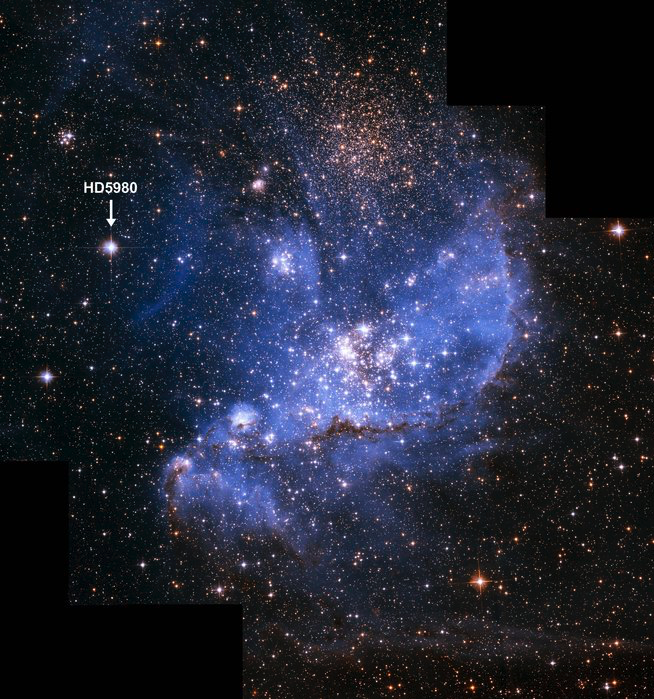
Copyright: NASA, ESA, A. Nota (STScI/ESA)
Description: A Hubble Space Telescope view of the cluster NGC 346 – the arrow indicates the position of HD 5980.
Massive stars are several times larger than our Sun. Due to their large mass, they burn their nuclear fuel rapidly and explode, ejecting large amount of material via what are called stellar winds. In the occasion that two such winds collide huge amounts of energy is released!
In 2007, astronomers, observed a pair of two massive stars (HD 5980) each with mass of 60 times the mass of our Sun and about 100 million kilometres apart, i.e., closer than the Earth-Sun distance. One of the stars had an outburst in the 19th century making it the second most luminous star in the sky for 18 years (Eta Carinae)! Since it was too late to observe the star’s eruption, scientists wanted to study the hot gas with X-ray telescopes. Therefore, they used ESA’s XMM-Newton and NASA’s Chandra X-ray telescopes. In 2016, they looked at it again. To their surprise, they found that the pair of stars appeared two and a half times bright than a decade earlier and its X-ray emission was more energetic.
According to Prof. Yaël Nazé, leading author of the relevant study, a plausible explanation of this phenomenon is the following: When stellar winds collide, the shocked material releases X-rays. As the material cools, the shock becomes unstable and the X-ray emission dims. This is what astronomers observed in 2007. But by 2016, the shock had relaxed, allowing the X-ray emission to rise again.
These are the first observations that support this theoretical scenario. Astronomers are now trying to further test this hypothesis using computer simulations.
Publication: Naze et al. 2018
Source: XMM-Newton
